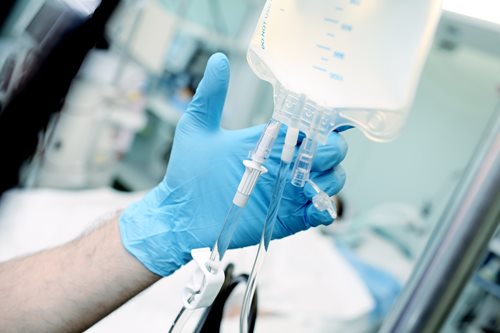
Understanding IV Therapy and the Role of Unlicensed Assistive Personnel
Intravenous (IV) therapy is a cornerstone of modern healthcare, allowing for the direct administration of fluids, medications, and nutrients into a patient's bloodstream. This method ensures rapid and efficient treatment, making it indispensable in various medical settings.
What is IV Therapy?
IV therapy involves the insertion of a catheter into a vein, typically in the arm, to deliver substances directly into the circulatory system. It's used for hydration, administering medications, blood transfusions, and nutritional support. The procedure requires precision and adherence to strict protocols to prevent complications such as infections, infiltration, or phlebitis.
The Emergence of Unlicensed Assistive Personnel (UAP) in IV Therapy
Unlicensed Assistive Personnel (UAP) encompass roles like Medical Assistants (MAs), Certified Nursing Assistants (CNAs), Patient Care Technicians (PCTs), and Phlebotomists. Traditionally, their responsibilities were limited to basic patient care tasks. However, with the evolving healthcare landscape and increasing demand for services, there's been a shift towards expanding their roles, including involvement in IV therapy.
Training and Competency
Before UAPs can participate in IV therapy, they must undergo comprehensive training to ensure patient safety and care quality. Courses like the "IV Education for Unlicensed Assistive Personnel" offered by Pedagogy Education provide UAPs with evidence-based infusion practices. This course covers:
- Legal Considerations: Understanding the regulatory framework and the importance of practicing under supervision.
- Anatomy and Physiology: Gaining knowledge about the vascular system to identify appropriate IV sites.
- Infection Control: Implementing measures to prevent infections during IV therapy.
- Complication Management: Recognizing and addressing potential issues like infiltration or phlebitis.
- Documentation: Maintaining accurate records of IV procedures and any complications.
Upon completion, participants are expected to demonstrate proficiency in IV catheter insertion and other related skills, typically under the guidance of a licensed preceptor.
Regulatory Landscape
It's crucial to note that the scope of practice for UAPs varies by state. For instance, states like California, Connecticut, South Dakota, and New York prohibit UAPs from inserting IVs. Therefore, it's imperative for UAPs and their employers to be well-versed with state-specific regulations and ensure that any delegation of IV-related tasks aligns with legal and institutional policies.
Supervision and Accountability
Even after training, UAPs must perform IV-related tasks under the direct supervision of licensed healthcare professionals. This ensures that any complications can be promptly addressed and that patient safety remains paramount. Institutions should have clear policies outlining the roles and responsibilities of UAPs in IV therapy, including competency assessments and ongoing evaluations.
Conclusion
The integration of UAPs into IV therapy roles reflects the dynamic nature of healthcare and the need to optimize resources. With appropriate training, supervision, and adherence to regulations, UAPs can effectively contribute to patient care, ensuring timely and efficient IV therapy administration. As the healthcare landscape continues to evolve, the roles of UAPs will likely expand further, emphasizing the importance of continuous education and competency validation.
For those interested in pursuing such training, our IV Education for Unlicensed Assistive Personnel course by is the course for you!

